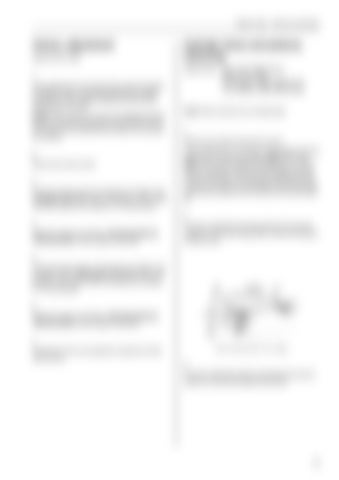Engine body - Service procedures
Valves, adjustment Special tools: 3590 1 Valve adjustment must only be done when the engine is stopped: cold or at operating temperature. Make sure that the stop control is pulled out and that the starting key is at “OFF”. NOTE! Valve clearance must not be adjusted with the engine running since the pistons could hit the valves. The valves can be adjusted according to the two-position method. 2 Remove the valve covers. 3 Crank the engine round in its direction of rotation until 1st piston is at T.D.C. after compression. (The valves of the 6th cylinder are rocking, 0° on the flywheel).
Cylinder liners and pistons, removing Special tools: 1801, 2013, 6394 (2 pcs), 6395 (2 pcs), 6645 10 ltr engines: 2089, 2666 (2 pcs) 12 ltr engines: 2955, 8043 (2 pcs)
Note! Piston and liner are a matched pair.
1 Remove the cylinder head and oil sump. If the cylinder liner is to remain on the engine when the pistons are removed, the holders 2666 (10 ltr) resp. 8043 (12 ltr) must be fitted so that the liner is not moved out of position. If the liner should glide up during removal of the piston then the liner should also be removed, since there is considerable risk that impurities will fall down between liner and block and cause leakage. 2
4 Adjust the valves according to Workshop Manual, Technical Data for each engine concerned.
Turn the crankshaft so that the piston for the actual cylinder is in the top firing position. Remove the piston cooling nozzle.
5 Crank the engine again in the direction of rotation (one complete turn) until 6th piston is at T.D.C. after compression. (The valves of the 1st cylinder are rocking, 0° on the flywheel). 6 Adjust the valves according to Workshop Manual, Technical Data for each engine concerned. 7 Piston cooling nozzle, 10 ltr. engine
Change the valve cover gaskets if required an fit the valve covers. 3
Turn the crankshaft until the connecting rod comes in position to remove the bigend cap screws.
33


